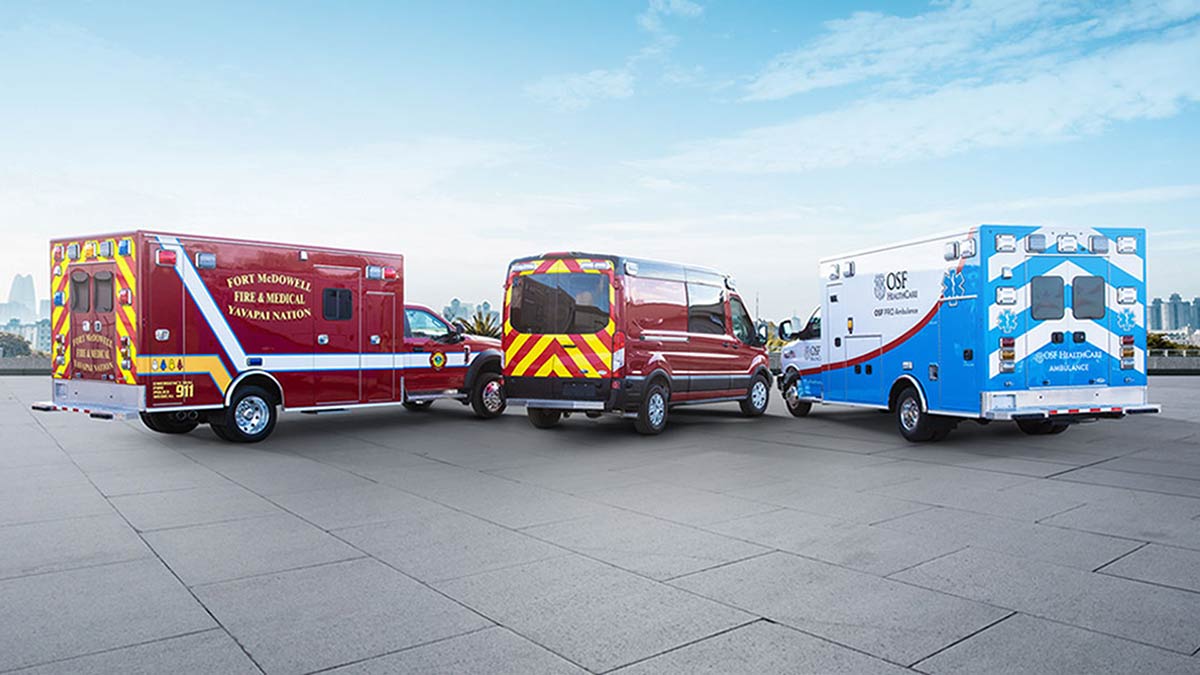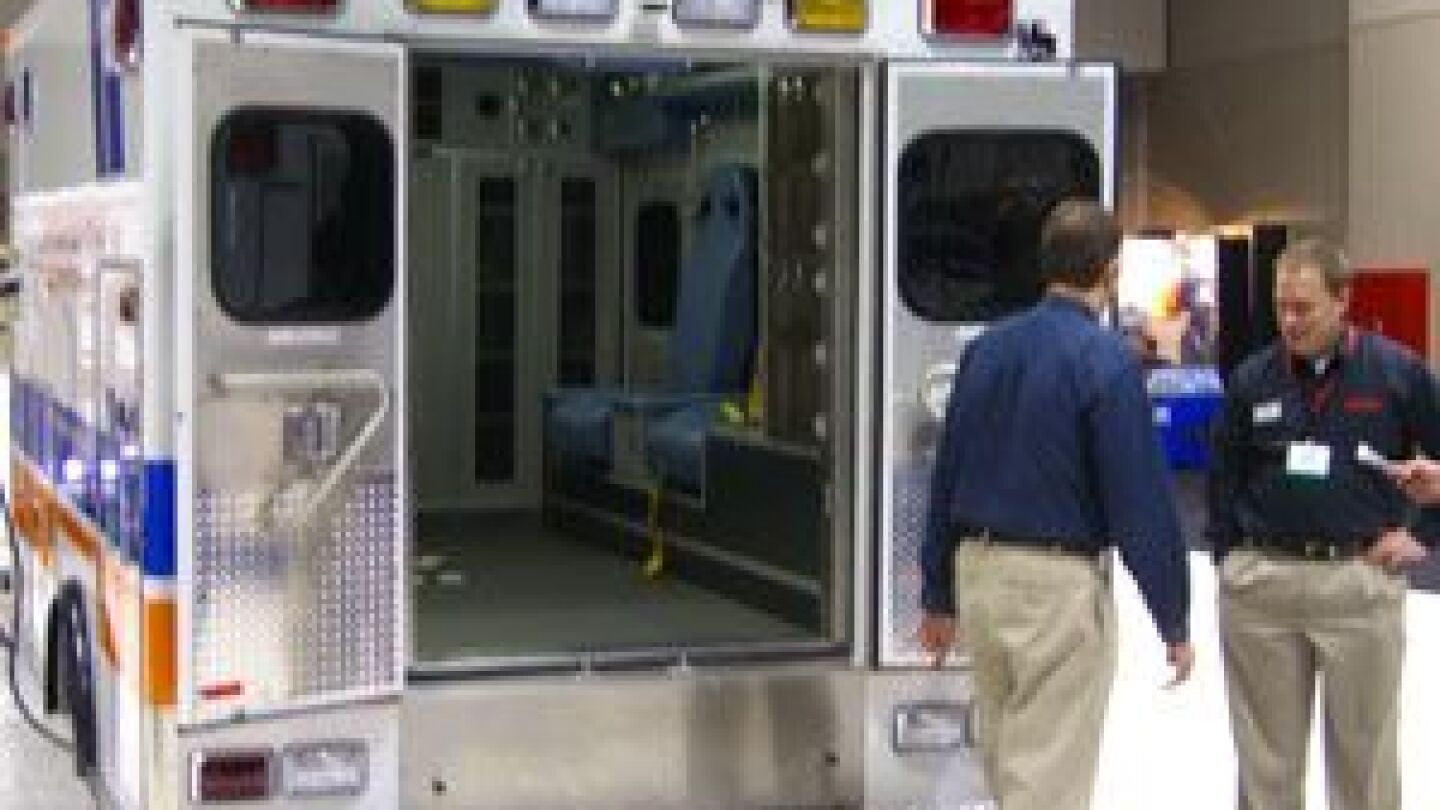EpiEMS
Forum Deputy Chief
- 3,845
- 1,165
- 113
Where can I obtain price quotes and historical price data for vehicle purchases? Working with a hybrid career/volunteer agency on structuring a plan for this.
Follow along with the video below to see how to install our site as a web app on your home screen.
Note: This feature may not be available in some browsers.
Not to sound too snarky, but have you tried asking the agency for their records?
most ambulances I have seen were purchased by the state bid lists; however, they are then heavily customized, as may agencies can pick and chose the options they want.
You can also contact the company manufactures you want to deal with and request they put you in touch with the local dealer. Let the sales people work up a quote for you, explaining what the cost of each feature is.
You can also create a spec sheet, and then list the Ct bid website as a RFP https://portal.ct.gov/DAS/CTSource/CTSource
lots of variables depending on what your agency wants to do.
 www.aev.com
www.aev.com



I suspect you will find these quotes to be accurate. Costs have skyrocketed in the past two years, we're at over a 30k increase on an unchanged spec. Your best bet to look at purchasing history might be through co-ops. Pennsylvania's COSTARs is a common as is Savvik. They negotiate a "base price" with each manufacturer (still sometimes with a dealer) and then you can add from that. Might be interesting to see what the increase on the base price is.Not too snarky at all - this is a couple pieces I was missing. The problem is, we have gotten absurdly high quotes and I am intensely skeptical based on some preliminary research, hence my wanting to mark this to market (see what actual prices paid and quoted are).
I suspect you will find these quotes to be accurate. Costs have skyrocketed in the past two years, we're at over a 30k increase on an unchanged spec. Your best bet to look at purchasing history might be through co-ops. Pennsylvania's COSTARs is a common as is Savvik. They negotiate a "base price" with each manufacturer (still sometimes with a dealer) and then you can add from that. Might be interesting to see what the increase on the base price is.
Does that include cot and loading system? If so probably not that far off.We’ve been quoted $300k for equivalent Type IIIs (box + chassis) to what we currently have and paid circa $180k for apiece. I am highly skeptical of whether the service really needs Type Is and IIIs (particularly the large box sizes we have) and of the quotes themselves.
Does that include cot and loading system? If so probably not that far off.
99% sure the answer is yes, but check with your Stryker dealer to be sure. You also want to to ensure their maintenance contract can be transferred to another vehicle.Not sure - fair point, will check on that. We do have perfectly good Stryker power cots. Do you know if the loading system can be removed and swapped in? (3 power loading systems in the current units)
If these are new enough to have powerloads and are likable boxes, consider a remount for sure.Not sure - fair point, will check on that. We do have perfectly good Stryker power cots. Do you know if the loading system can be removed and swapped in? (3 power loading systems in the current units)
as a 6'3" provider, who is around 240ish lbs, I never want to step foot into a type 2 vanbulance.All good points above. I am pushing for Type IIs and fighting a losing battle. I also would be amenable to shorter 140”, 150” type IIIs
You're thinking as a provider and not a budget troll/management.as a 6'3" provider, who is around 240ish lbs, I never want to step foot into a type 2 vanbulance.
a type 2 is ok for bls IFT, or when you only will ever have 2 providers in the ambulance. as someone who has worked a cardiac arrest, and had a Medic need to be told by his partner that he needs to do compressions, bc the emts are driving the trucks, I can't imagine putting two or three providers in the back with a sick patient, or a student, or.. well, anything other than a bls call.
my preference is type 3. while type 2s are cheaper, and I know agencies that use them for 911 work, I think the drawbacks exceed their advantages
Worked many sick patients in an AMR Ford transit with three providers in back and can’t ever think of a time where I thought “if I had more room it would make a difference.”as a 6'3" provider, who is around 240ish lbs, I never want to step foot into a type 2 vanbulance.
a type 2 is ok for bls IFT, or when you only will ever have 2 providers in the ambulance. as someone who has worked a cardiac arrest, and had a Medic need to be told by his partner that he needs to do compressions, bc the emts are driving the trucks, I can't imagine putting two or three providers in the back with a sick patient, or a student, or.. well, anything other than a bls call.
my preference is type 3. while type 2s are cheaper, and I know agencies that use them for 911 work, I think the drawbacks exceed their advantages
I believe the Ford Ecoline van is out of production now. Transits are what the vast majority of type 2 ambulances are, with different roofline heights though even the midsize is high enough to be a huge benefit. Unfortunately unlike sprinters there aren’t long wheelbase options, so for services that carry more stuff (PPE, water rescue, irons, rehab stuff etc), there isn’t much going.I've never been in a transit sprinter, so I can't speak for those... but I've been in the back of these truck like the one below, and wish we weren't tripping over each other.
Cheaper than a type 3? absolutely. remountable? nope, these vans can't be remounted. Most people at my former agency tried to avoid them for full time 911 trucks, unless there were no other options. But if you want a cheap option, that can travel a large number of miles, with only two providers and a patient, then they do the job.
Has it ever affected clinical outcomes? doubtful, but then again, I don't think if there are any studies that have shown any difference in clinical outcomes in sick patients, depending on what type of ambulance the agency uses.
